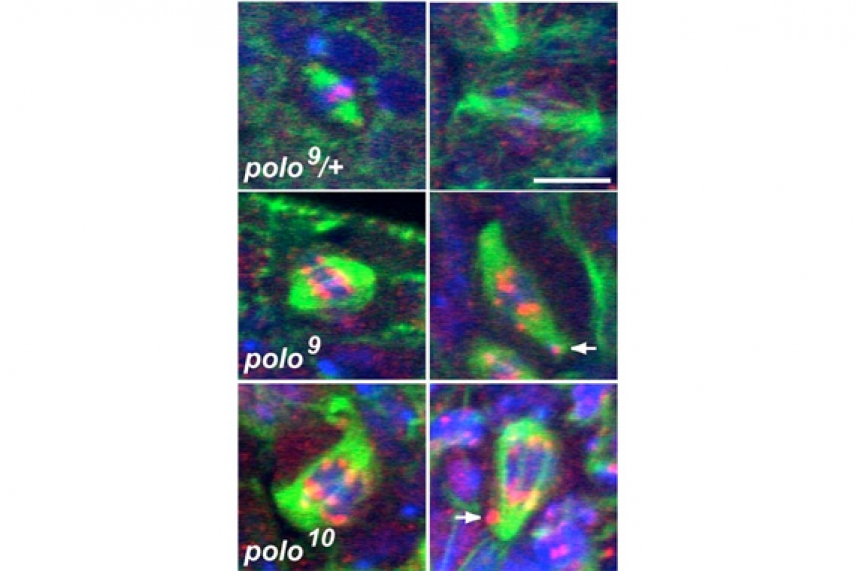When cells divide

In the top two frames, the glue-like protein MEI-S332 (shown in red) leaves the chromosomes (shown in green) once they separate. In the bottom four panels, a mutant form of MEI-S332 still sticks, causing the chromosomes to separate abnormally.
Cells are dividing all the time, and that’s a good thing. If they didn’t, our tissue and organs couldn’t replenish themselves, and pretty soon we’d be done for. But when cell division goes wrong, it can have disastrous results, such as cancer and birth defects.
Scientists in the lab of Whitehead Member and MIT professor of biology Terry Orr-Weaver have uncovered one of the primary mechanisms governing cell division, publishing the results earlier this year in the journal Developmental Cell.
“This paper advances our understanding of how the accurate partitioning of chromosomes is ensured during cell division by defining the mechanisms controlling a key protein in the process, MEI-S332,” says Orr-Weaver.
Except for egg and sperm cells, all of the chromosomes in our cells come in pairs. Half of each pair comes from our mother, and the other half from our father. When a cell divides to give birth to two daughter cells, it must ensure that both new cells also contain a complete maternal and complete paternal set of chromosomes.
To do this, the cell first enters into an intermediate stage where its number of chromosomes doubles, resulting in a single cell that for a brief time contains all the genetic material for two cells. During that time, the chromosomes are paired and attached to each other—mother to mother, father to father—by proteins that act as a sort of glue.
When the time comes for cell division to complete, the protein dissolves and releases the chromosomes from each other, allowing them to separate into the daughter cells. This protein-based “glue” is regulated by the MEI-S332 protein discovered in the Orr-Weaver lab and found in both fruit flies and mammals.
“The failure of this glue-like protein to function properly will result in cells with either too many or too few chromosomes,” says Astrid Clarke, a postdoctoral researcher in the Orr-Weaver lab and lead author on the paper. “Hence birth defects or cancer.”
Through studying how this protein functions in the fruit fly, Clarke identified the precise chemical reaction by which the protein binds and then releases the chromosomes during this intermediate stage. The key finding was that the protein releases the chromosomes from each other by adding a phosphate to the binding point.
These findings are particularly significant given that researchers have found that levels of MEI-S332 are higher than normal in 90% of all breast cancers. According to Clarke, this might mean that when there’s too much of the protein, the chromosomes don’t separate properly, or it might mean that the MEI-S332 gene is mutated on the chromosomes. Either way, “there definitely is a direct link between our protein and cancer,” says Clarke.
Topics
Contact
Communications and Public Affairs
Phone: 617-452-4630
Email: newsroom@wi.mit.edu


